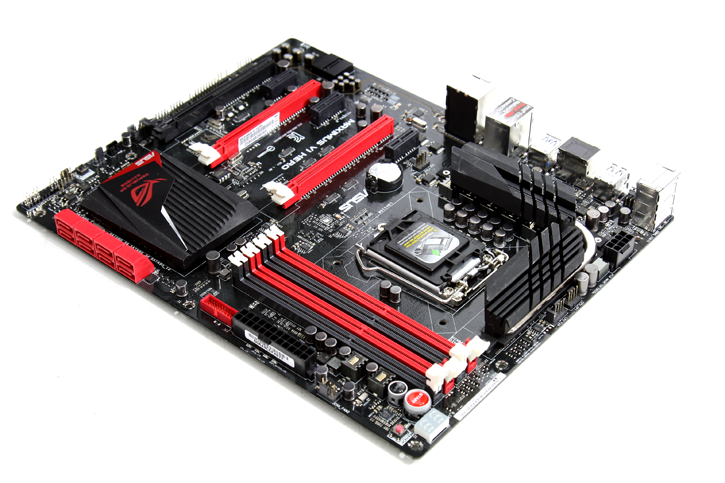Conclusion
Final Words & Conclusion
The Z87 Maximus VI Hero is a pretty interesting motherboard for many reasons. It is what I consider to be a high-end grade and class product, though priced in the upper range of mainstream. The Hero will fill the gap between the Formula and the Gene series, giving standard form factor users the ROG experience and quality without the price of the Formula and Extreme. The board is aimed and paired with Haswell processors (fourth-generation Core i3, Core i5, and Core i7 processors). Part of the ASUS Republic of Gamers brand, the Maximus VI HERO is targeted for users who like to build a gaming system. All this makes the board not too expensive, but sure some cuts have been made. One Ethernet jack, no WIFI, no DisplayPort. But other then that, very little negative can be said really. Being a ROG motherboard the overall baseline performance trumps pretty much any Z87 boards we have tested as ASUS (and we explained this before already) applies a little trick with the motherboard, slightly higher turbo values locked in at 3900 MHz whereas Intel reference specified boards clock lower overall as well as the mainstream motherboards. This is the reason why ROG boards are a little faster overall.
Aesthetics
Okay looks are subjective. Some like skinny, maybe thin and some require a little booty... but hey taste matters yet differs eh? So this tidbit is personal, the Maximus VI Hero is an good looking motherboard with a proper layout and stuffed with features. But again that's opinion, and thus subjective.
Performance
Overall non-overclocked performance as stated is above the baseline of the reference Z87 motherboards we tested, with an offset here and there of course. If you have two left hands in terms of overclocking in the UEFI bios simply hit CPU level UP mode and the 4770K processor will be tweaked instantly. Manual tweaking. We got the 4770K processor rocking stable at 4800 MHz with the memory (XMP enabled) at 2400 very easily, and that's pretty much the best results we have had with this kind of coolling (heatpipe Noctua D14 dual-fans). However the CPU temperatures remained really nasty. As stated many times now, Haswell processors run hotter when overclocked opposed to Sandy Bridge, reaching 4600~4900 MHz might be easy to accomplish with the motherboard but you'll find yourself needing juice in the 1.35 Volts range of the processor and that, requires massive cooling.
So tweaking limitations are not based on the motherboard. In fact this motherboard will go as extreme as you need it to, and then it'll help you accomplish that. Really, tweaking with the Maximus VI Hero is just fantastic. It's just Haswell processor running too darn hot. So be prepared for processor heat, proper liquid cooling definitely deserves a recommendation here alright. If you go for a manual tweak you may go as complex as you desire, that's what ROG motherboards are about. For the not-so-PC-diligent tweakers, you could just enabled one of the several CPU level up modes and let the motherboard overclock itself with a variety of choices. I tell you this though, overclocking itself is easy on this motherboard. As you have been able to see, in this review we used GSKILL new Ares series memory as well, and in the BIOS we simply flicked the XMP profile to on and boom, the memory was running at a rather amazing clock frequency. Ridiculous fast! Combined with the CPU overclock towards 4800 MHz we had built a very impressive performing PC within less than a minute and nearly unreal memory bandwidth.
Conclusion
Handy related downloads:
- Sign up to receive a notice when we publish a new article
- Or go back to Guru3D's front page.
“Never forget what you are, for surely the world will not. Make it your strength. Then it can never be your weakness. Armour yourself in it, and it will never be used to hurt you.”



